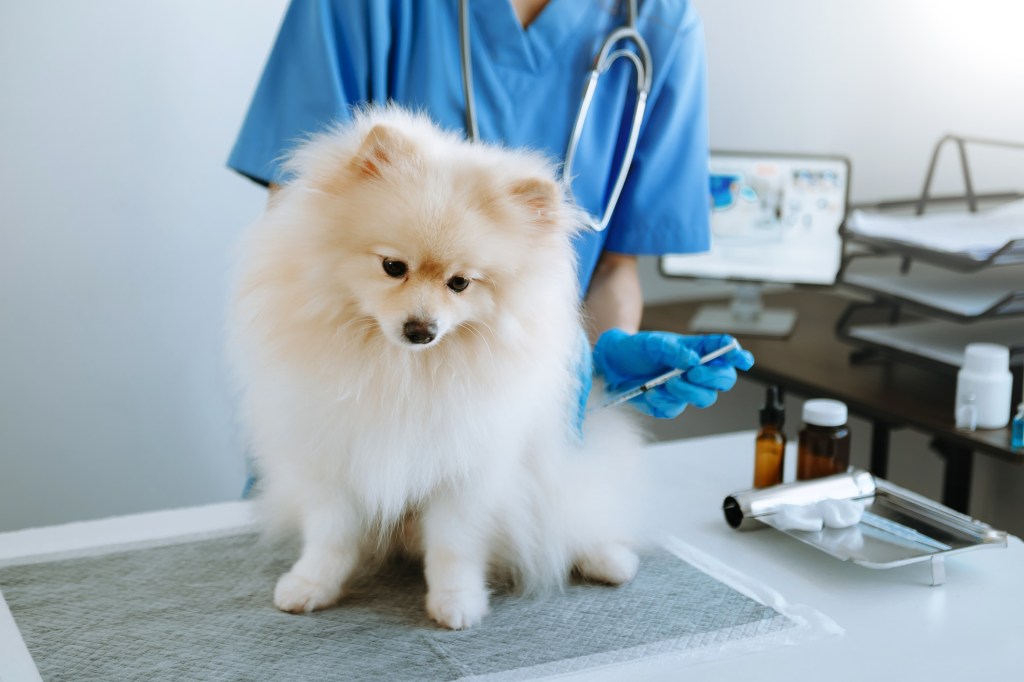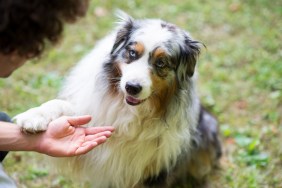Thrombopathia in Dogs: Symptoms, Causes, & Treatments

Thrombopathia in dogs is a rare blood disorder that affects the function of platelets or thrombocytes — the cells responsible for blood clotting. Unlike thrombocytopenia, which is a decrease in the number of platelets, thrombopathia is characterized by a dysfunction in platelet behavior, despite having a normal count. This condition can lead to excessive bleeding during surgery, from injuries, or spontaneous bleeding episodes.
Here’s what you should know about the symptoms, causes, and treatments for the condition.
Symptoms of thrombopathia in dogs
The symptoms of thrombopathia in dogs can vary widely but primarily revolve around abnormal bleeding or prolonged clotting times. You might notice:
- Prolonged bleeding from small cuts or wounds
- Bleeding gums without apparent cause or following minor trauma
- Blood in the urine or feces
- Presence of hematomas on ears
- Gastrointestinal bleeding
- Nosebleeds (epistaxis)
- Excessive bruising on the skin from minor bumps or for no identifiable reason
Some dogs may also exhibit signs of anemia due to the loss of blood — such as lethargy, weakness, or a faster-than-normal heartbeat. If you observe any of these symptoms in your dog, it’s crucial to consult your veterinarian as soon as possible.
Your vet will first review your dog’s medical history, focusing on any symptoms you may have noticed. Next, they will conduct a thorough physical examination that includes measurements of weight, pulse, and blood pressure. If your dog has an injury, addressing any bleeding is the primary concern.
To pinpoint thrombopathia, your vet may suggest a variety of tests. These could include a urinalysis, a fecal exam to check for blood in the stool, a complete blood count, platelet function tests, an activated partial thromboplastin time (APTT), and specific coagulation tests like DT. For breeds like Basset Hounds, a RASGRP1 gene test could be particularly insightful. Should there be any indication of internal bleeding, your vet may recommend further diagnostics like abdominal X-rays and ultrasound to grasp the full picture of your dog’s condition.
@media (min-width: 0px) and (max-width: 749px) { .pb_prebidjs_300x250_a__wrapper { min-height: 250px; } } @media (min-width: 750px) { .pb_prebidjs_300x250_a__wrapper { display: none; } }
Causes of thrombopathia in dogs

Thrombopathia is genetically inherited as an autosomal recessive trait. This means that a dog must inherit the defective gene from both parents to be affected. Specifically, a mutated gene known as RASGRP1 has been associated with the condition in Basset Hounds. This mutation impairs the normal signal transduction pathways of platelets, making them less responsive to signals that trigger the clotting process.
Breeding dogs with thrombopathia significantly increases the chances of passing on the disorder to the puppies. Dogs who are carriers of the mutation — inheriting the gene from just one parent — will not show symptoms but can pass the gene to their offspring, thereby maintaining the prevalence of the condition within the breed. Besides Basset Hounds, the Finnish Spitz also has a predisposition to thrombopathia.
Treatments for thrombopathia in dogs
Currently, there is no cure for thrombopathia in dogs. However, there are ways to manage the condition and minimize the risk of complications. Treatment strategies may include:
- Minimizing injury risk: Keep your dog safe from situations where they might get cut, bruised, or injured. Moreover, it’s wise to avoid or closely supervise activities that could result in even minor injuries.
- Veterinary monitoring and care: Regular veterinary check-ups are essential for early detection of any bleeding-related issues. Special care should be taken with procedures known to cause bleeding — such as nail trimming — which should ideally be done by a professional.
- Diet and lifestyle adjustments: Switching to a softer diet can help reduce the risk of gum injuries. Likewise, opting for softer toys can prevent unnecessary trauma.
- Medical management: In cases where anemia or iron deficiency develops due to chronic blood loss, your vet might recommend supplementation with vitamin B12 and iron. For gastrointestinal bleeding, antibiotics and protectants like sucralfate can help manage and prevent further bleeding. Additionally, dogs experiencing significant blood loss may require blood transfusions to replace lost blood and provide functioning platelets to help with clotting.
Thrombopathia in dogs can pose a significant challenge. However, with attentive care and appropriate medical management, many dogs with this condition live full, happy lives. If you suspect your dog may be suffering from thrombopathia, or if they belong to a breed that is predisposed, it’s important to seek veterinary advice. Remember, early intervention can make a crucial difference in managing this condition effectively.




